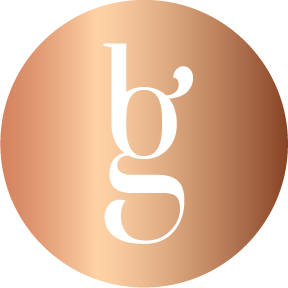1. Remembering
Q1: What is fluence in the context of laser hair removal?
A1: Fluence is the amount of laser energy delivered per unit area, measured in Joules per square centimeter (J/cm²).Q2: How is fluence measured?
A2: Fluence is measured in Joules per square centimeter (J/cm²).Q3: Which factors influence the fluence setting?
A3: Hair thickness, skin type, and the treatment area influence the fluence setting.Q4: What happens if fluence is too low during a treatment?
A4: If fluence is too low, the hair follicle may not receive enough energy for effective destruction.
2. Understanding
Q1: Explain why higher fluence is needed for thicker, coarser hair.
A1: Thicker, coarser hair requires more energy to heat and destroy the hair follicle, so higher fluence ensures enough energy is delivered.Q2: How does skin type affect fluence settings during a laser treatment?
A2: Darker skin types absorb more laser energy, so a lower fluence is needed to prevent burns, while lighter skin types can tolerate higher fluence.Q3: Describe the relationship between fluence and client safety during laser treatments.
A3: Proper fluence settings ensure enough energy is delivered to destroy the hair follicle while avoiding excessive energy that could cause skin burns or discomfort.Q4: How does fluence contribute to the overall effectiveness of laser hair removal?
A4: Fluence determines how much energy is delivered to the hair follicle. Too little fluence results in ineffective treatment, while too much can cause skin damage.
3. Applying
Q1: A client has thick, dark hair and light skin. What fluence setting should you consider using for effective results?
A1: You should use a higher fluence setting because thick, dark hair absorbs more energy, and light skin can tolerate the higher energy.Q2: How would you adjust the fluence if a client reports discomfort during a session?
A2: You would lower the fluence setting to reduce the amount of energy delivered and prevent skin damage or discomfort.Q3: A client with dark skin is undergoing treatment. How would you adjust the fluence to avoid burns?
A3: You should lower the fluence to prevent excessive energy absorption by the melanin in the skin, reducing the risk of burns.Q4: What fluence setting would you use for fine, light-colored hair, and why?
A4: A lower fluence setting should be used because fine, light-colored hair requires less energy for effective treatment.
4. Analyzing
Q1: Compare the effects of using low fluence on thick versus fine hair.
A1: Low fluence may be ineffective on thick hair as it doesn’t deliver enough energy to destroy the follicle, while it may work on fine hair due to less energy requirement.Q2: How would an incorrect fluence setting affect the outcomes of a treatment?
A2: Incorrect fluence can result in either ineffective hair removal (too low) or skin burns and irritation (too high).Q3: Why is it important to balance fluence when treating clients with darker skin tones?
A3: Darker skin absorbs more energy due to higher melanin levels, so a balance is needed to avoid burns while still delivering enough energy to the hair follicle.Q4: Analyze how fluence adjustments differ when treating a large area like the legs compared to a sensitive area like the face.
A4: Larger areas may require moderate fluence to ensure efficiency, while sensitive areas like the face require lower fluence to avoid skin irritation.
5. Evaluating
Q1: Evaluate the safety risks of using high fluence on dark skin.
A1: High fluence on dark skin increases the risk of burns or hyperpigmentation because darker skin absorbs more energy.Q2: Assess the effectiveness of using lower fluence on thick, coarse hair.
A2: Lower fluence may not be effective on thick, coarse hair as it may not deliver enough energy to damage the hair follicle properly.Q3: How important is fluence adjustment in ensuring successful hair removal and client safety?
A3: Fluence adjustment is critical for achieving hair follicle destruction without causing skin damage, making it vital for treatment success and safety.Q4: Why might higher fluence not always lead to better results in laser treatments?
A4: Higher fluence can cause skin damage and burns, especially on darker skin tones, and doesn’t necessarily improve effectiveness if not matched to the hair type and skin sensitivity.
6. Creating
Q1: Design a fluence setting protocol for treating light skin with fine hair and dark skin with coarse hair.
A1: For light skin with fine hair, use a lower fluence setting. For dark skin with coarse hair, use a lower fluence with longer pulse duration to protect the skin but still treat the hair effectively.Q2: Create a guide for adjusting fluence during a multi-area treatment session on the legs and face.
A2: Use moderate fluence for the legs, where the skin is less sensitive, and lower fluence for the face to avoid skin irritation.Q3: Develop a checklist to help estheticians adjust fluence for clients with sensitive skin.
A3: Include skin assessment, starting with lower fluence, monitoring client feedback, and adjusting fluence incrementally for comfort and safety.Q4: Propose a strategy for determining the ideal fluence setting based on client skin type and hair thickness.
A4: Begin by assessing the Fitzpatrick skin type and hair type, and use test spots to determine the best fluence level for effectiveness without causing skin damage.

